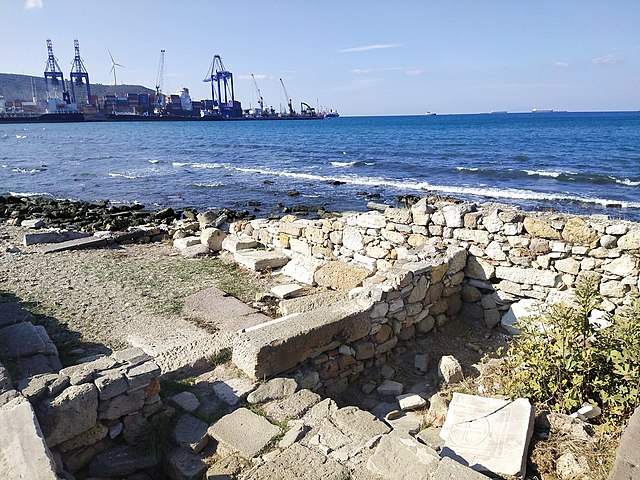Cyme or Cumae was an Aeolian city in Aeolis close to the kingdom of Lydia. It was called Phriconian, perhaps from the mountain Phricion in Aeolis, near which the Aeolians had been settled before their migration to Asia.
Aeolis, Kyme; Tetradrachm; Silver; circa 165-140 BC; Obverse: Head of the Amazon Kyme right, wearing taenia; Reverse: Horse walking right, skyphos (one handled cup) below, ΚΥΜΑΙΩΝ left, ΣΕΥΘΗΣ (magistrate) in exergue, all within laurel-wreath; 34.2mm, 16.409g; Reference: SNG Von Aulock 1640; Oakley obv. die 59; Sg4183 var
Front: Cyme Ruins and Christian Cross, Back: Aliağa Port and Wind Mill
Nero & Diva Agrippina Jr Æ 15mm of Aeolis, Cyme. Circa 54-59 AD. QEON NERWNA KUMAIWN, young laureate head of Nero right / QEAN AGRIPPINAN, veiled head of Agrippina Jr right.
Statue of a young woman; late Hellenistic, 1st century BC, Cyme (Namurt).
Aeolis, or Aeolia, was an area that comprised the west and northwestern region of Asia Minor, mostly along the coast, and also several offshore islands, where the Aeolian Greek city-states were located. Aeolis incorporated the southern parts of Mysia, and is bounded by it to the north, Ionia to the south, and Lydia to the east.
Ruins of the Agora of Smyrna
Aeolis, Kyme; Tetradrachm; Silver; circa 165-140 BC; Obverse: Head of the Amazon Kyme right, wearing taenia; Reverse: Horse walking right, skyphos (one handled cup) below, ΚΥΜΑΙΩΝ left, ΣΕΥΘΗΣ (magistrate) in exergue, all within laurel-wreath; 34.2mm, 16.409g; Reference: SNG Von Aulock 1640; Oakley obv. die 59; Sg4183 var





